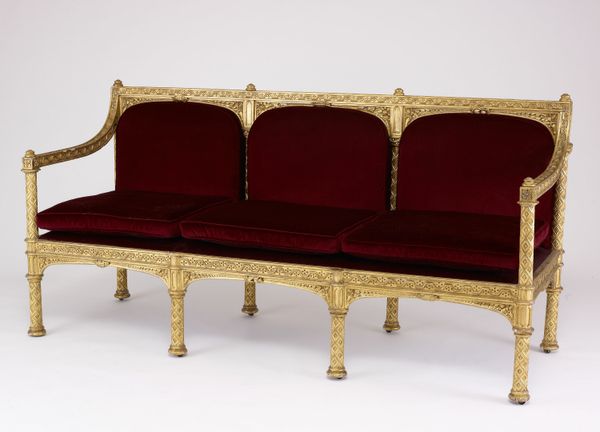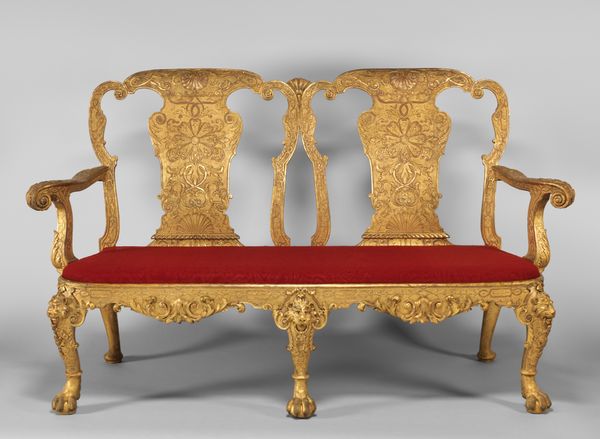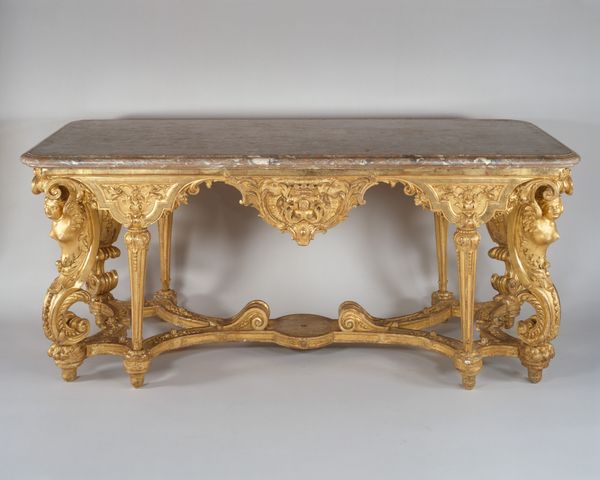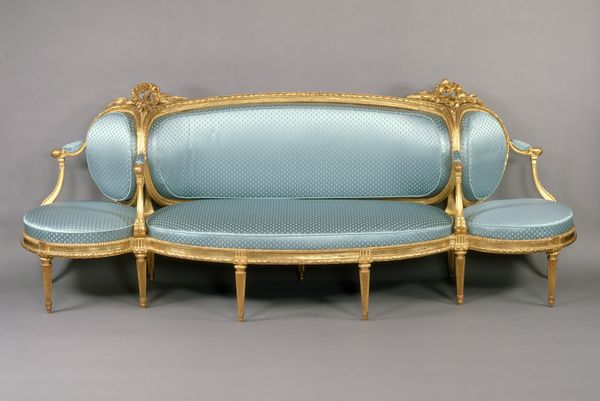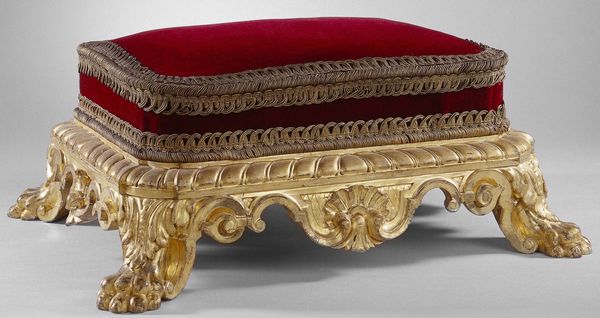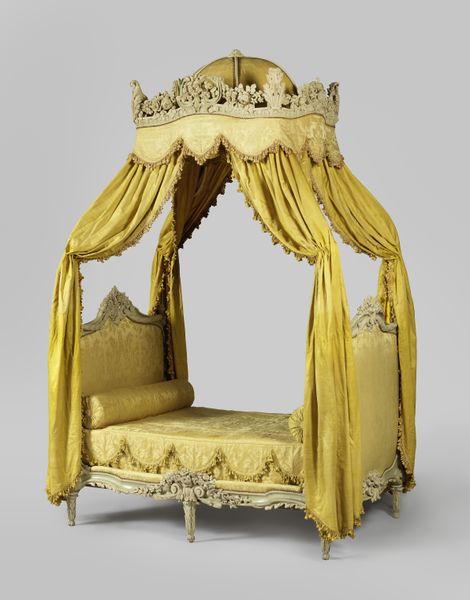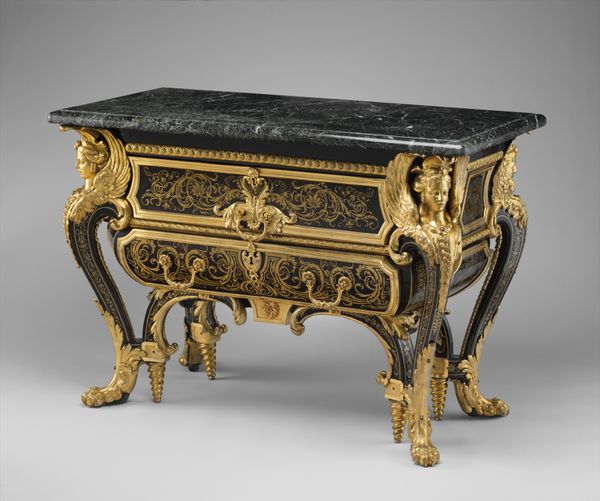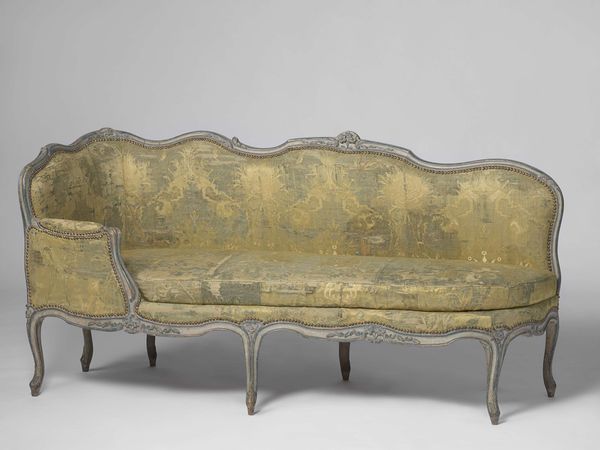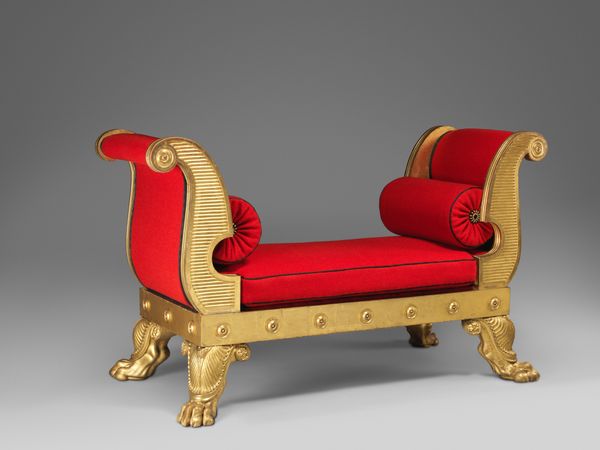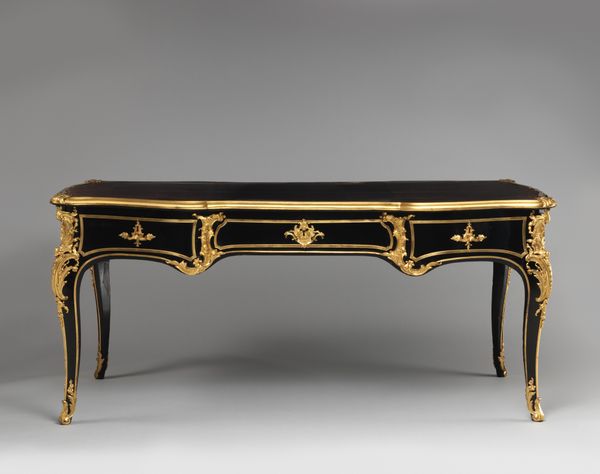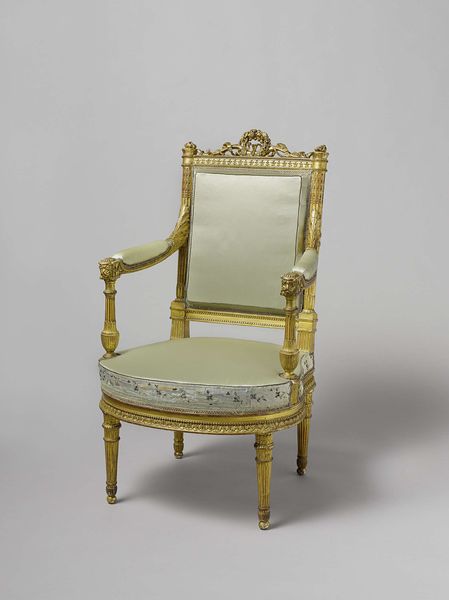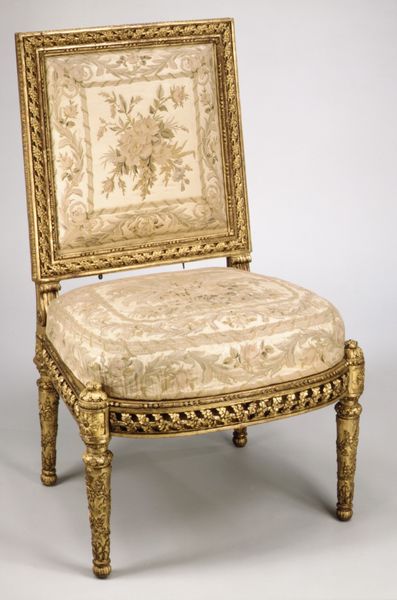
Dimensions: height 76 cm, width 128 cm, depth 65 cm, weight 29 kg
Copyright: Rijks Museum: Open Domain
This sofa was made by Georges Jacob in France during the late 18th or early 19th century, but what can this decaying form tell us about French social and institutional history? The sofa, in its prime, would have been a statement of wealth and status, reflecting the opulence of the French aristocracy. Looking beyond its aesthetic qualities, it represents a specific moment in French history, a time of great social inequality and excess that ultimately led to the French Revolution. Consider the history of institutions such as the French monarchy and the system of patronage that supported artists like Jacob. These structures shaped the production and reception of art, reinforcing social hierarchies and power dynamics. Historical sources such as period inventories and estate records, can shed light on the circulation and consumption of luxury goods, highlighting the economic structures that underpinned artistic production. Ultimately, the value we place on it today is a reflection of our own social and institutional context.
Comments
No comments
Be the first to comment and join the conversation on the ultimate creative platform.
